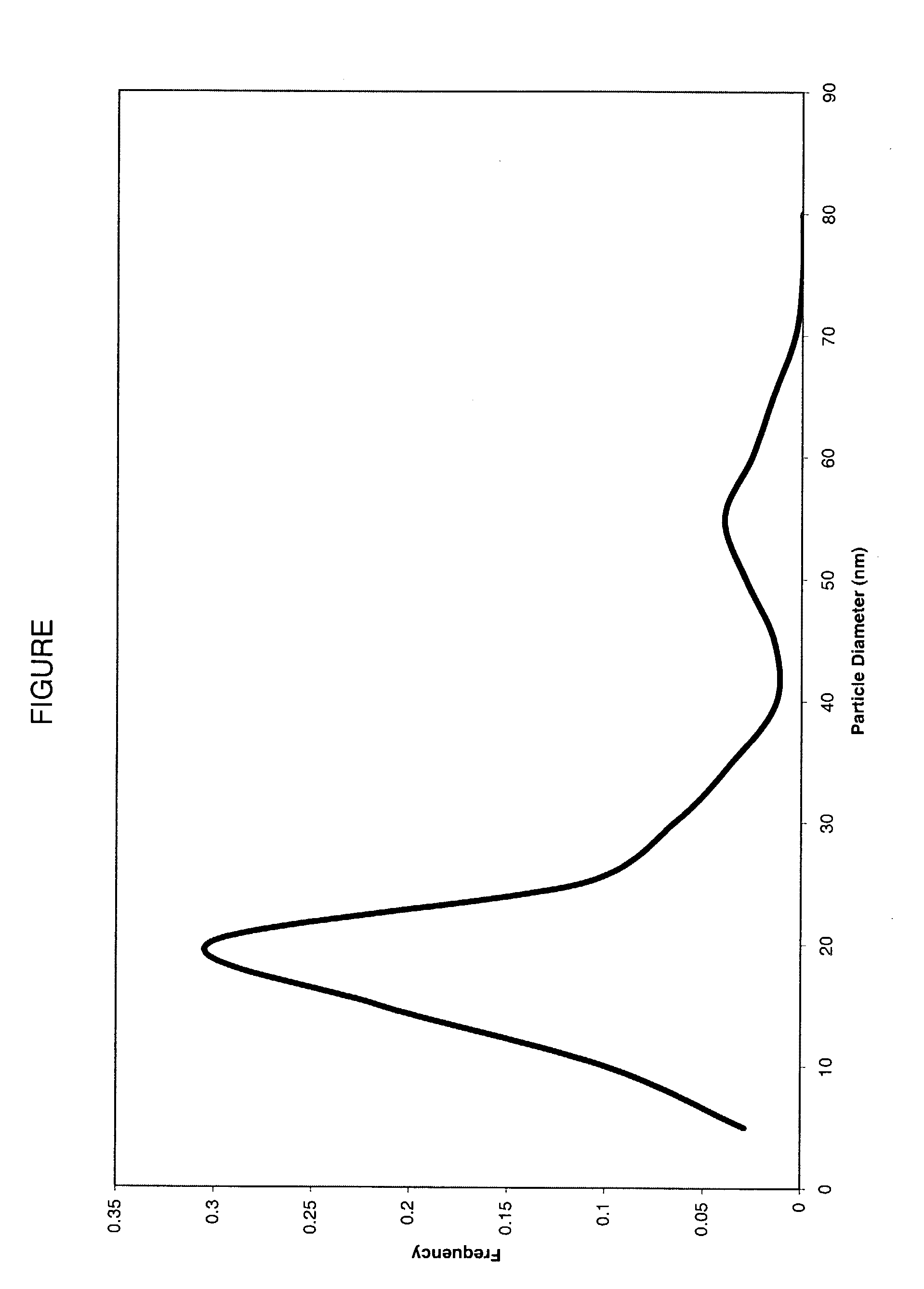Coating composition comprising colloidal silica and glossy ink jet recording sheets prepared therefrom
- Summary
- Abstract
- Description
- Claims
- Application Information
AI Technical Summary
Benefits of technology
Problems solved by technology
Method used
Image
Examples
example 1
ON)
[0079] Martoxin.RTM. GL3 (SSA=332 m.sup.2 / g) alumina from Martinwerks was peptized according to the manufacturer's procedures. Martoxin.RTM. GL3 powder was added to deionized (DI) water at a 15% solids level and stirred for 5 minutes. Then the pH was adjusted to 4.5 with acetic acid and the slurry stirred for 10 more minutes. At the end the pH was again adjusted to 4.5 with acetic acid. 21.015 g (15 wt. %) of the above prepared colloidal alumina slurry was placed in a beaker. To that, 4.85 g of Airvol.RTM. 523 (15.5 wt. % solution) polyvinyl alcohol were added. Then, 0.19 g of Agefloc.RTM. B50 dye mordant (50 wt. %), diluted with 0.768 g of deionized water was added to the mixture. The resulting formulation was coated as a 100 micron wet film on Melinex.TM.-534 polyester, opaque white film, from E. I. DuPont de Nemours & Co. using a K control coater from Testing Machine Inc. (TMI) using a number 8 rod which deposits a wet film thickness of 100 microns. The obtained coating had a ...
example 2
ON)
[0080] 10.01 g of Ludox.RTM. CL-P (40% solids; 140 SSA; 22 nm average particle size; % (by weight) Na=0.250; SiO.sub.2 / Na=160) cationic colloidal silica from W. R. Grace & Co.-Conn. were placed in a beaker and diluted with 10.31 g of deionized water. To that, 5.81 g of Airvol.RTM. 523 (15.5 wt. % solution) polyvinyl alcohol were added followed by 0.22 g of Agefloc.RTM. B50 (50 wt. %). The resulting formulation was coated on polyester film as described in Example 1. The obtained coating had a gloss of 4% at 60 degrees.
example 3
ON)
[0081] 84 g of deionized water was added to 329 g of Ludox.RTM. HS-40 (W. R. Grace) colloidal silica containing 40.0% SiO.sub.2 with average particle size=12 nm and having specific surface area=220 m.sup.2 / g. The mixture was heated to 40-50.degree. C. and Amberlite.RTM. IR-120 Plus cation exchange resin in the hydrogen form was added with stirring in small amounts until the pH dropped to 2.5. Stirring and temperature were maintained for 1 hour, during which small amounts of resin were added to maintain pH in the range of 2.5-3.0. The mixture was filtered through coarse filter paper to separate the deionized colloidal silica sol from the resin. 1% ammonium hydroxide solution was added to the deionized colloidal silica sol dropwise, with stirring, until the sol reached the range of pH 7.2-7.5.
[0082] The resulting colloidal silica sol was added dropwise into a beaker containing 87.2 g of 45% aluminum chlorohydrol (20.7% Al.sub.2O.sub.3 and Al:Cl atomic ratio of 2:1) with rapid stirr...
PUM
| Property | Measurement | Unit |
|---|---|---|
| Temperature | aaaaa | aaaaa |
| Fraction | aaaaa | aaaaa |
| Angle | aaaaa | aaaaa |
Abstract
Description
Claims
Application Information
 Login to View More
Login to View More - R&D
- Intellectual Property
- Life Sciences
- Materials
- Tech Scout
- Unparalleled Data Quality
- Higher Quality Content
- 60% Fewer Hallucinations
Browse by: Latest US Patents, China's latest patents, Technical Efficacy Thesaurus, Application Domain, Technology Topic, Popular Technical Reports.
© 2025 PatSnap. All rights reserved.Legal|Privacy policy|Modern Slavery Act Transparency Statement|Sitemap|About US| Contact US: help@patsnap.com



